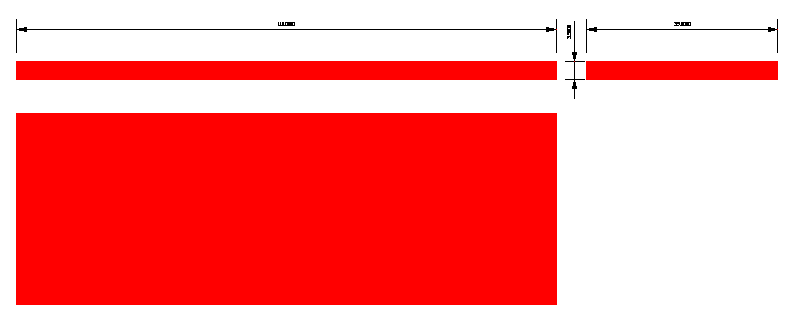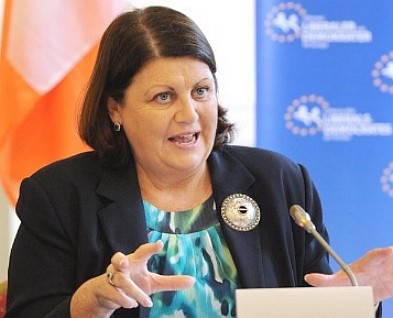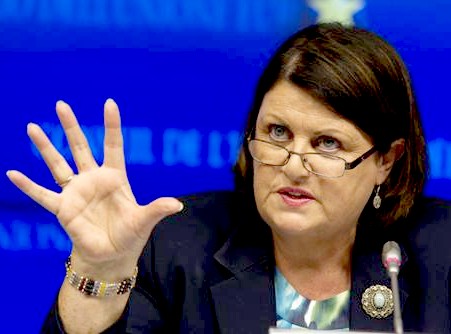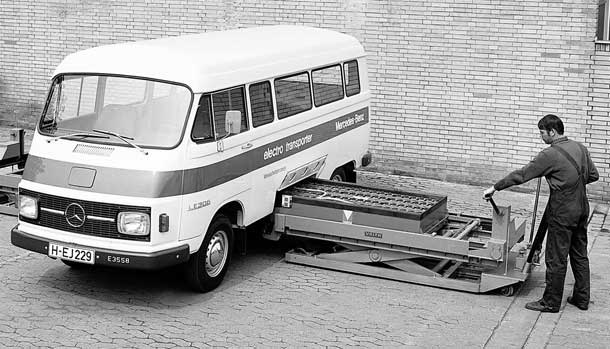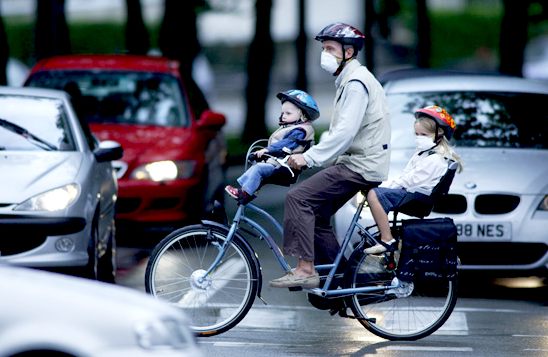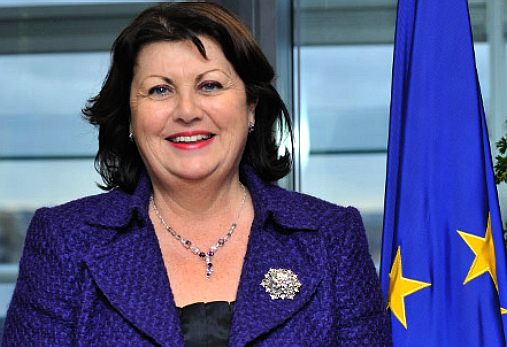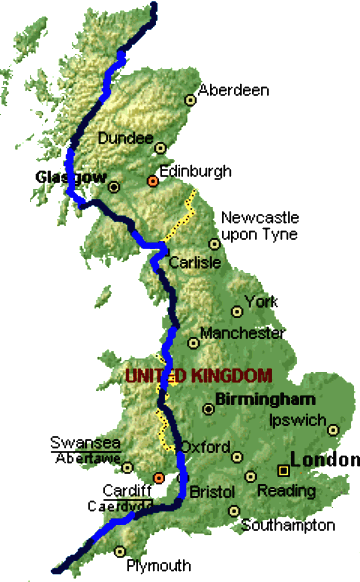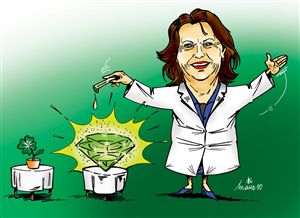|
UNIVERSAL - ENERGY CARTRIDGES
|
|||||||||||||||||||||||||||||||||||||||||||||||||||||||||||||||||||||||||||||
|
THE DEVONSHIRE PROJECT: Shown here is a Bluebird™ 3.6 - 7.68MW solar assisted service station containing 96 cartridges on a continuous charge cycle. Five of these stations (38.4MW) can recharge (refuel) up to 10 cars a minute. Next time you visit your BP or Tesco fuel pump, count the number of cars leaving the station in a minute. You will find that an electric forecourt holds the potential to be quicker. During rush hour, 300 cars might be serviced in one hour. During an eight hour day 2,400 cars might be serviced more conveniently than plug in curb-side charging and we start every morning with 96 slow charged cartridges from off-peak supplies. The same forecourt might be used to service fuel-cell cars powered by liquid hydrogen. One size fits all. The secret is to KISS the design (keep it simple silly). There are only 28* moving parts in this station, not including the gearbox for the solar powered drive motor. This is possible because the cars load the cartridges themselves. Learn more about this concept. SEE BELOW FOR EXAMPLE CARTRIDGE SIZES.
HORIZON'S
INTEGRATED TRANSPORT STRATEGY
ROLE
UNIVERSAL ENERGY CARTRIDGE: Shown here is one proposed size for a Universal energy cartridge. The cartridge may contain many types of energy storage medium: batteries and fuels cells being the most likely, though hybrid forms are also to be considered. The internal volume is approximately 0.145m2 or 8 cubic feet. The difficult part is getting the motor manufacturers to agree to the basic coupling dimensions - which makes the concept "universal." Failing which, to take the decision from them with directives.
Another example of a Bluebird™ smart-city "Universal" energy cartridge. Once again the internal volume is 8 cubic feet. This lower-profile unit is suitable for a number of existing super-mini cars - and is compatible with the Bluebird™ service station prototype that is being proposed for a test town - such as in the Devonshire project. These cartridges may contain lithium batteries or fuel cell storage medium.
WORLD COMPETITIVENESS
ONE POSSIBLE SOLUTION
It is a sorry situation that BMS would not qualify for EU support if the company were to apply for funding to build a consortium, where small start-ups do not have access to commercial funding for high risk ventures. Thus, cannot lead high value bids, for they would not pass audit - and would be at risk as to insolvency. Indeed, money spent even trying would be wasted.
Better then to share a concept and hope that another company (anywhere in the world) with the resources, might want to explore innovation that holds the potential to solve the long term sustainability issues. Any company thinking along these lines might employ BMS as consultants, thus engaging the original philosophy should feasibility issues crop up - and input is required. Countries most likely to benefit from the Universal Cartridge system are: South America, India and Australia, where they have abundant incoming solar radiation. Other geographical locations such as Ireland and Scotland will also benefit from their abundance of wind energy.
Motor manufacturers may not think so but they need help. By the very nature of competition, it will be nigh on impossible for car makers to agree on anything that might give one brand a market advantage over another. It's a cut throat business - in fact, it's a cut throat world.
Our role in this unfolding drama is to bring to fruition a concept that is workable and cast it on the waters to get discussions going. Arguably, as we write, there is no other published concept that could work and nobody is proposing a universal solution. The Better Place system failed because it did not tackle the grass roots issues. Nobody would disagree that it was a bold step in the right direction and full marks to Mr Agassi and his investors for having the vision to give it a shot - largely driven by Shai himself.
The Greenways system is only aimed at van deliveries. Once again, Peter Badik and Juraj Ulehla deserve the highest praise for doing something positive, but the system they are using is not universal, not could it ever be in its present guise.
FIRST STEPS
Like a baby taking its first hesitant steps, the first stage to getting zero carbon vehicles on the road as a replacement to petrol and diesel engines, is to unify a format that the vast majority of producers can incorporate into their existing designs without too much bother.
In order for that to happen, someone needs to propose a workable system that can then be refined. We would suggest that once that general approach has been accepted that a Working Party consisting of representatives from any stakeholder wishing to have their input considered, should be formed. Subject to funding being available, we would be willing to chair that WP - and if appropriate apply for and secure IP for the Members for dissemination to the Members.
Early Mercedes battery cartridge system was much like the GM and Lucas systems, bulky and impractical.
FEASIBILITY
A study should be conducted as to global resources, such as to be able to demonstrate that a system based on that proposed is implementable internationally.
This study will encompass not only the mechanics of ground installations, but also the generating and renewables capacity at present and projected, to validate the concept in terms of the zero carbon objectives - and sustainability.
TEST VEHICLES
Manufacturers may present vehicles for conversion and trials.
SERVICE STATION
A prototype may be constructed where Members vehicles would trial the system to prove longevity and workability.
PROJECT DEVONSHIRE
A town will be selected to install a number of service stations, with Members providing cars at affordable prices to volunteers. For convenience we are proposing a town like Eastbourne in Sussex, such evaluation to be called "Project Devonshire." This is not too dissimilar to that run at La Rochelle in France in from 1985 where around 300 EVs were eventually deployed with fast charging bays provided by the local authority. The difference is only in the improved technology - hence, workability.
CANCER
It is not the cure for cancer, but the cleaner air that will result from the adoption of zero emission vehicles will prevent carcinogens from entering the atmosphere, thence our lungs.
Solar powered charging points for EVs are becoming more popular.
THE PROPOSAL: ‘BLUEBIRD UNIVERSAL EV SERVICE STATION (SMART CITY) PROTOTYPE’
RANGE ANXIETY - The blend of technology outlined above promises an innovative energy efficient vehicle and support infrastructure necessary that fulfills the aspirations of the Canadian authorities and member states of the European Union. CLEAN MOTORING - Electric vehicles incorporating a means of instant refueling could make road transport clean and practical by eliminating the limited ranges of fixed battery EVs, which are perceived as less practical by the at present long parked-up recharge times.
Máire Geoghegan-Quinn: “I am a politician, I am not a civil servant. I am into action, we've done enough talking, the time is now for action.” That is the message she imparted to her fellow MEPs. The commissioner for research, innovation and science, was once tipped to be a prime minister of Ireland, spent the past 13 years in the political wilderness. In 1997, she stepped down from Irish politics. Her appointment to the European Court of Auditors in 2001 kept her out of the limelight until now. Not even during the two recent referendums on the Lisbon treaty held in Ireland was her opinion registered. But she is now back with a bang. Bagging what appears to be a good portfolio in the European Commission, given the €50 billion budget it commands and the fact that innovation is a centre-piece of the EU's job-creation plans.
Geoghegan-Quinn began her political career by winning her father’s seat in the national parliament, following his death in office. She subsequently held a number of ministerial positions, and even ran for leader of the Fianna Fáil party, dropping out the day of the election when it was clear she would lose. A few years after withdrawing her candidacy, she withdrew herself from politics altogether, and became a member of the board of the Ganley Group, among other positions. Two years later she was appointed to the European Court of Auditors. Geoghegan-Quinn was also the Justice Minister of Ireland where she did some good pushing through considerable law reform legislation, including decriminalizing male homosexuality. She may be controversial, but she gets the job done.
ENERGY GENERATING-DISTRIBUTION UTILITIES
What a pity that Brussels is not prepared to fund the research above, which tackles range restrictions at grass root levels, in favour of incremental energy savings as outlined in the call below. The problem with the academics ladling out the funding is that they do not appear to appreciate that small concerns with visionary solutions cannot afford to waste time applying for calls that are aligned in principle, but actually not aligned such that a bid could succeed.
A road trip from John O'Groats to Lands End is proposed as a means to persuade critics that eco EVs can compete with IC cars in the future. A Tesla EV has already set a blistering pace for challengers to beat.
GREEN VEHICLES 2014H2020-GV-2014Sub call of: H2020-GV-2014-2015
Topic: Optimised and systematic energy management in electric vehicles GV-2-2014 Specific challenge: Range limitation, due to the limited storage capacity of electric batteries, is one of the major drawbacks of electric vehicles. The main challenge will be to achieve a systematic energy management of the vehicle based on the integration of components and sub-systems. The problem is worsened by the need to use part of the storage capacity in order to feed auxiliary equipment such as climate control. In extreme conditions up to 50% of the batteries' capacity is absorbed by these systems. The systematic management of energy in electric vehicles is a means to gain extended range without sacrificing comfort. The challenge is therefore to extend the range of electric vehicles in all weather conditions.
Scope: Proposals should address the combination of the following developments: comprehensive thermal management system (including thermal insulation, innovative heating and cooling approaches), battery life duration enhancement as a side effect of thermal management, electronic control of energy and power flows, energy efficiency of electrified accessories, energy harvesting functions and automated and eco-driving strategies.
The Commission considers that proposals requesting a contribution from the EU of between EUR 3 to 8 million each would allow this specific challenge to be addressed appropriately. Nonetheless, this does not preclude submission and selection of proposals requesting other amounts.
Expected impact: Research and innovation activities will contribute to a faster introduction of electric and plug-in hybrid cars. Cars autonomy will be increased thanks to a reduction of at least 50% of energy used for passenger comfort and at least 30% for component cooling in extreme conditions with reference to electric vehicles currently on the market.
Type of action: Research and Innovation Actions
GREEN VEHICLES 2015H2020-GV-2015Sub call of: H2020-GV-2014-2015
Topic: Electric
vehicles’ enhanced performance and integration into the
transport system and the grid
GV-8-2015 Specific challenge: The limited driving range of electric vehicles is one of the biggest deployment challenges for electromobility. A ground-up re-design is needed to fully take advantage of the design freedoms and the opportunities in defining and developing the electric and electronic architecture and components. This should result in increased efficiency and range and make a major contribution towards the transition to fully electric vehicles (FEV's).
A particularly important element that needs to be addressed is the battery management system (BMS), which is fundamental for many aspects of electrified vehicle performance, from energy efficiency (and therefore range) to safety, battery life and reliability.
Information and communication technologies (ICT) significantly contribute to enhancing the energy efficiency and thus the range of the vehicle by providing accurate prediction of the range and offering personalised options and services to the driver. Furthermore ICT supports recharging that is coordinated with the local electric grid capabilities. Such coordination must accommodate not only passenger EVs, but also meet the requirements of electric buses, vans or trucks, which are expected to require high-powered fast recharging. Scope: Proposals should address one of the following complementing domains and could include interfaces between these domains:
· EV concepts featuring a complete revision of the electric and electronic architecture to reduce complexity and the number of components and interconnections, whilst improving energy efficiency, functionality and modularity. This may be supported by drive-by-wire or wireless communication, as well as advanced energy storage, transmission and conversion systems including miniaturisation. Challenges in safety, security, reliability and robustness, including electro-magnetic compatibility, are to be addressed. Work shall pursue a high degree of standardisation and cover the entire electric vehicle value chain.
· Concerning BMS research work will focus on a combination of the following aspects: – Novel BMS designs with improved thermal management, power density and life time, safety and reliability. – Improved modelling and simulation tools for BMS improvement. – Contribution to standardisation of BMS components and interfaces. – Test methodologies and procedures to evaluate the functional safety, reliability and lifetime of battery systems.
· In-vehicle integration of the overall cycle of EV energy management into a comprehensive EV battery and ICT-based re-charging system management, providing ergonomic and seamless user support. Such integration should build upon existing technology standards.
· Digital support for EVs such as common information model, market place interaction and service provision based on wireless / power line communication interfaces, roaming management, energy consumption and supply as well as cost aspects are in the scope.
· Interoperability of EVs with the communication infrastructure and electricity grid regarding locally deployed smart-grid and smart-metering systems while investigating arising operational issues and taking current developments into account. Specific requirements of various EV types and customer requirements should be addressed.
The Commission considers that proposals requesting a contribution from the EU of between EUR 5 to 10 million each would allow this specific challenge to be addressed appropriately. Nonetheless, this does not preclude submission and selection of proposals requesting other amounts.
Expected impact:
· Improvements in the cost-performance ratio of EV contributing to quicker market take-up. · Enhancements to vehicle range and/or weight, battery life and reliability without compromising on safety - delivering a more robust and well managed battery system. · Standardised BMS components and interfaces · Progress on ICT-based technologies for coordinated EV recharging. · Improved attractiveness of EVs, achieved through a seamless and ergonomic energy management cycle (spanning the entire cycle from re-charging spot selection/reservation to plug-out after re-charging). · Contributions to standardisation strengthening the competiveness of the European industry. Type of action: Research and Innovation Actions
TECHNOLOGY IMPROVING SOLAR AND FUEL BATTERY SYSTEMS
NineSigma, representing a multi-billion dollar electrical manufacturer, is seeking technical information regarding enhancements and improvements for Solar and Fuel Cell battery systems, by providing additional benefits in conjunction with photovoltaic (PV) panels and fuel cells (FC).
The deadline to submit Proposal Briefs for NineSigma RFI# 70389, "Technology Improving for Solar and Fuel Battery Systems" is Monday, February 24, 2014. Please let Mr Ishiga know if you are interested in responding but cannot provide a proposal by this date. This reminder does not represent a complete description of the project.
A full description, associated documents, and discussion forum can be found on the RFI page of our NineSights community, accessible online at:
http://www.ninesights.com/docs/DOC-10035
If you are interested in submitting a proposal or would like more information, you may post questions or comments online, or you may contact Mr Ishiga by email. When you submit a proposal, please use the response template downloaded from the link below:
Login to preview the full Request. To open the full Request specifications as a PDF, use the Download links below. Click here for the NineSigma: Response template
To view all NineSigma RFIs as well as other needs from their clients, join NineSights - the NineSigma Open Innovation Community at http://www.ninesights.com/
See more at: http://www.ninesights.com/docs/DOC-10035?campaign
T. Ishiga
ECOSTAR DC50 LINKS A-Z INDEX
LINKS & REFERENCE
http://ec.europa.eu/research/participants/portal/desktop/en/opportunities/h2020/topics/2608-gv-8-2015.html http://ec.europa.eu/research/participants/portal/desktop/en/opportunities/h2020/topics/2602-gv-2-2014.html http://www.eurosduvillage.eu/spip.php?page=print&id_article=3335&lang=fr https://www.europeanvoice.com/article/imported/comeback-commissioner/67374.aspx http://horizon2020projects.com/sc-transport-interviews/storing-energy-in-horizon-2020/ http://horizon2020projects.com/sc-transport-interviews/powering-the-future/ http://cordis.europa.eu/fp7/ideas/home_en.html http://cordis.europa.eu/fp7/ideas http://ec.europa.eu/programmes/horizon2020/en/ http://ec.europa.eu/transport/themes/research/horizon2020_en.htm http://www.wired.com/autopia/2012/09/formula-e/ http://www.telegraph.co.uk/finance/The-electric-cars-of-the-future.html Rechargeable Li-Ion OEM Battery Products http://ec.europa.eu/research/h2020/topics/2608-gv-8-2015.html
The patent Bluebird™ instant energy transfer system - in its ultimate form, promises EV refueling in around 10 seconds, whether hydrogen or lithium based energy storage is used. Get your free developer License from Bluebird Marine Systems Ltd, or let us know if you might like to form a consortium to take this valuable research further. The shame of it is that a small SME with no access to finance for disruptive technology is excluded from all of the current government funding schemes in Canada, the USA and Europe.
|
|||||||||||||||||||||||||||||||||||||||||||||||||||||||||||||||||||||||||||||
|
This
website is Copyright © 2014 Bluebird Marine Systems Limited.
The names Bluebird,
Ecostar DC50™,
SeaNet, Utopia Tristar™
and the blue bird in flight
|


